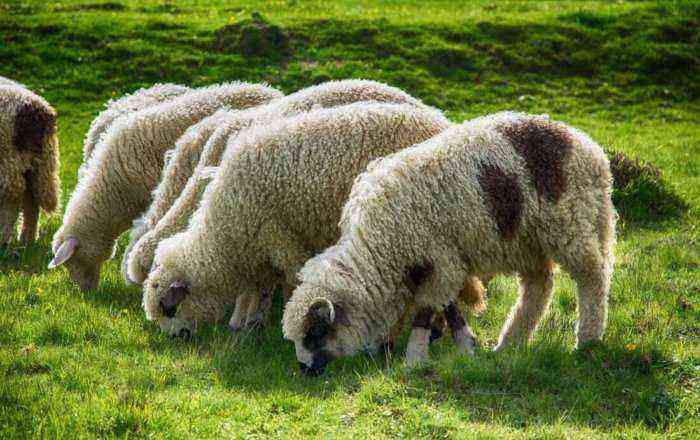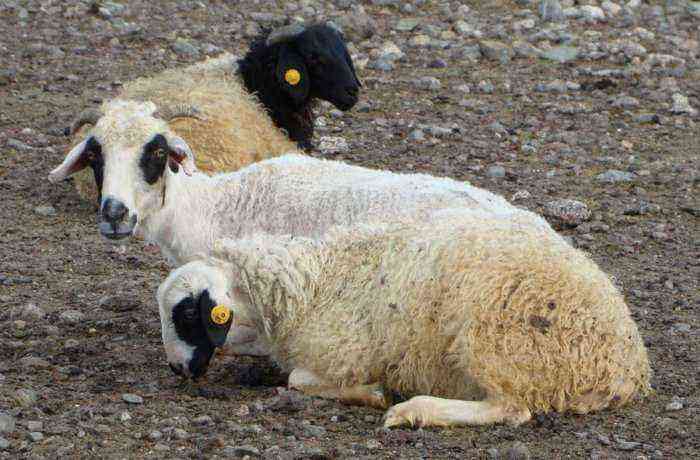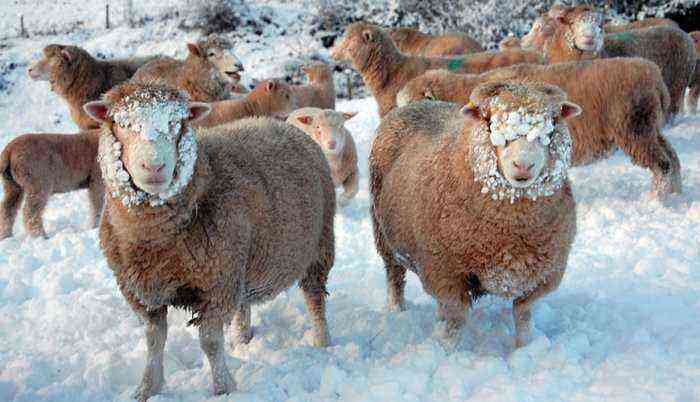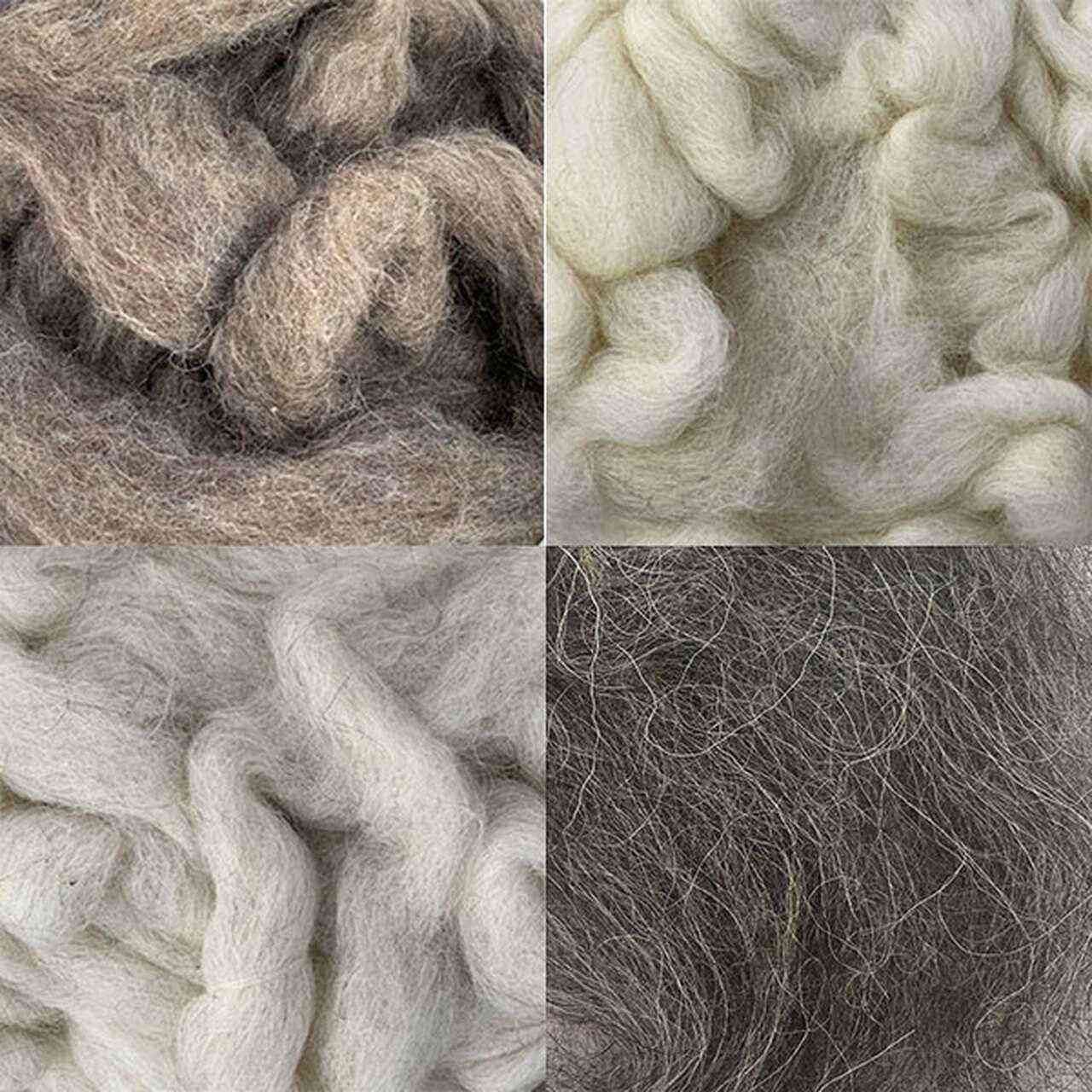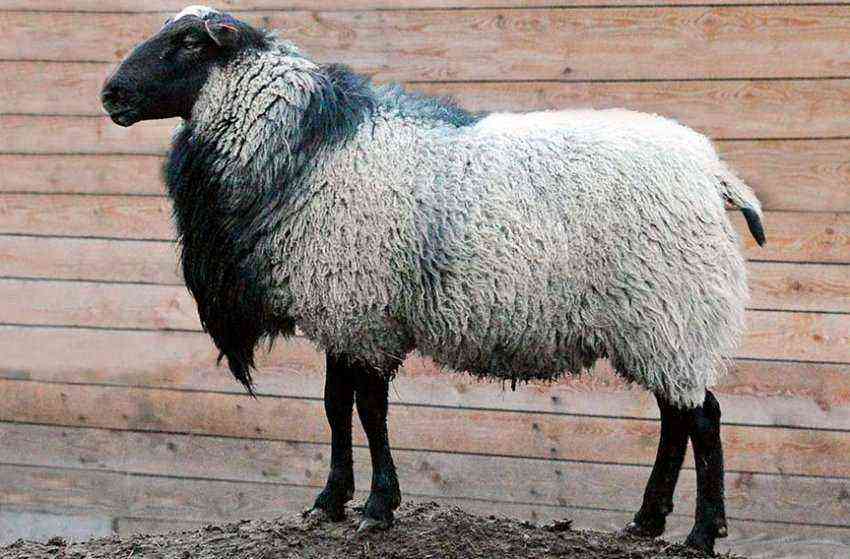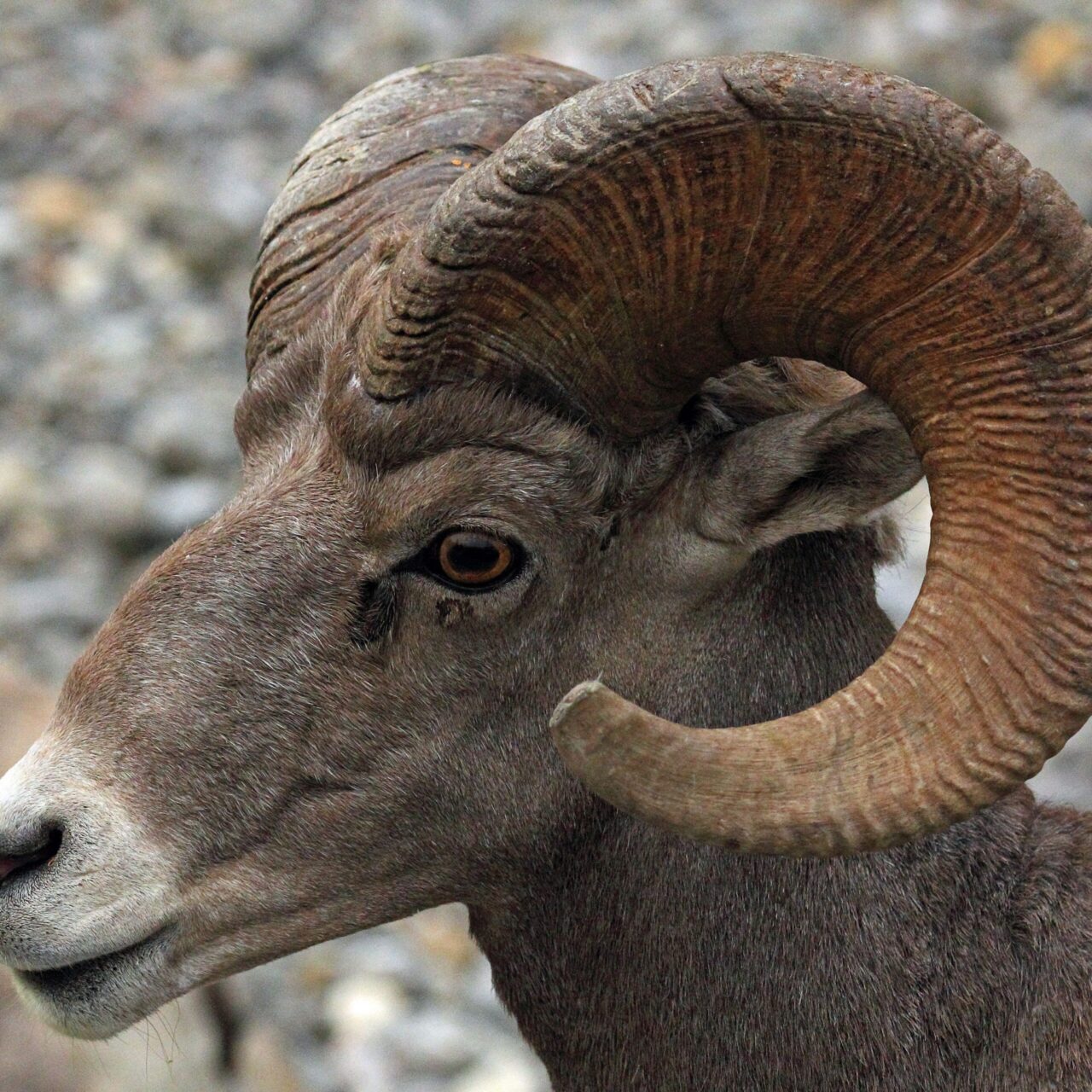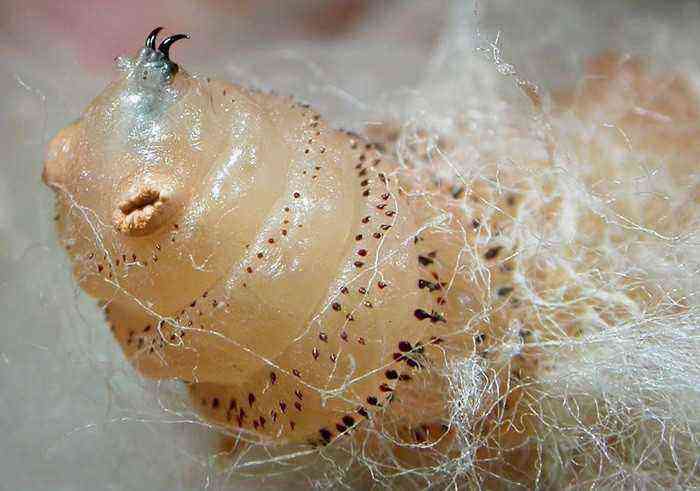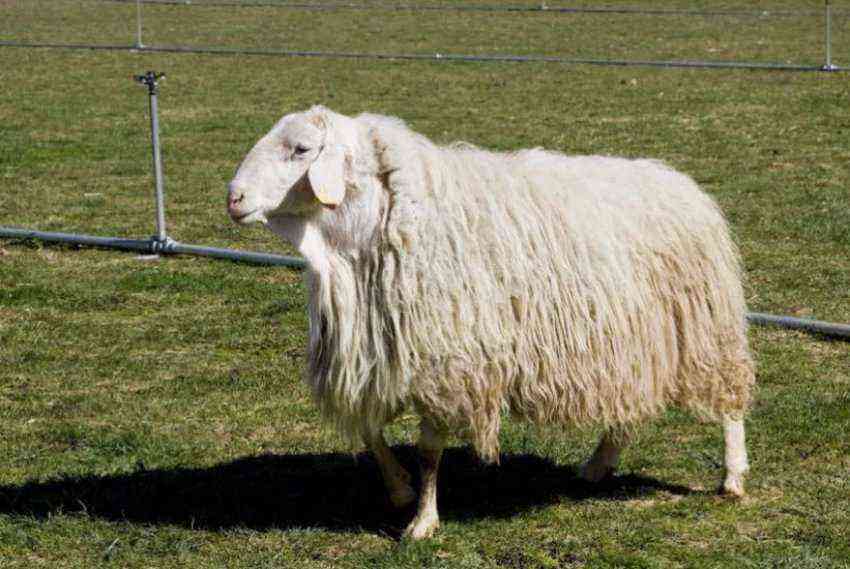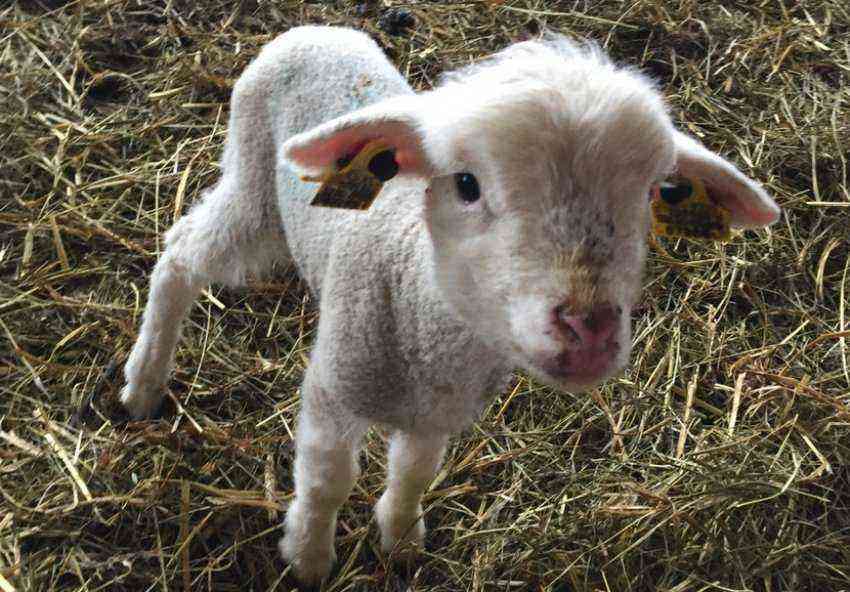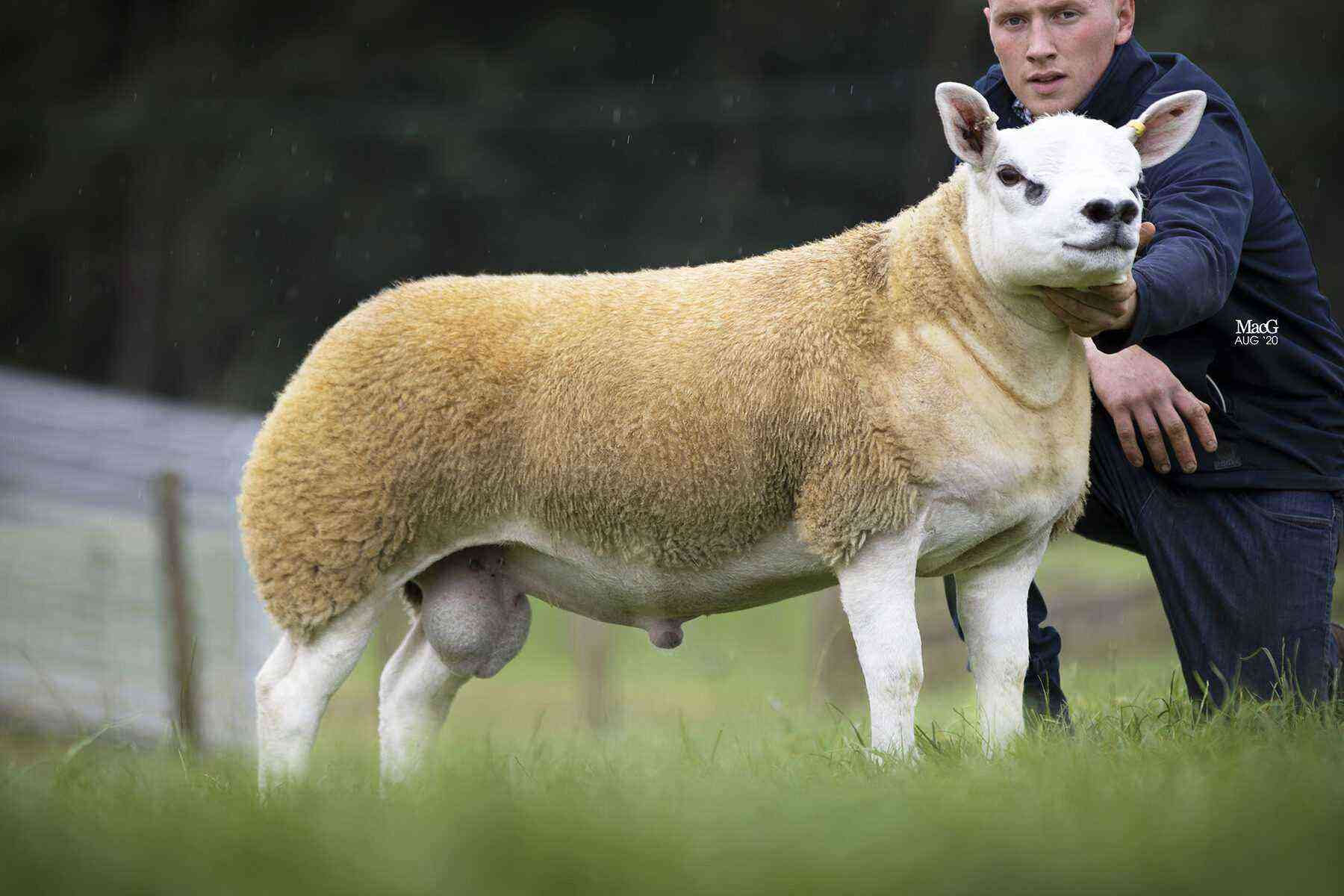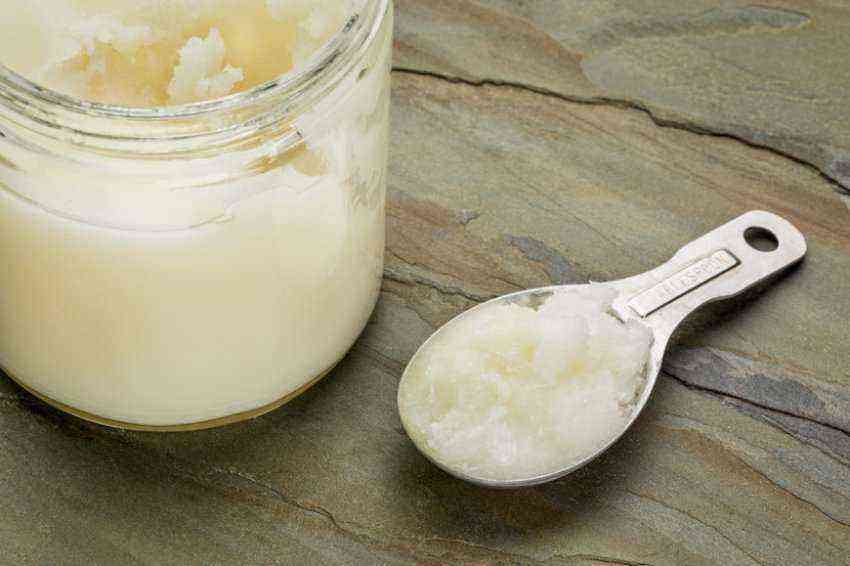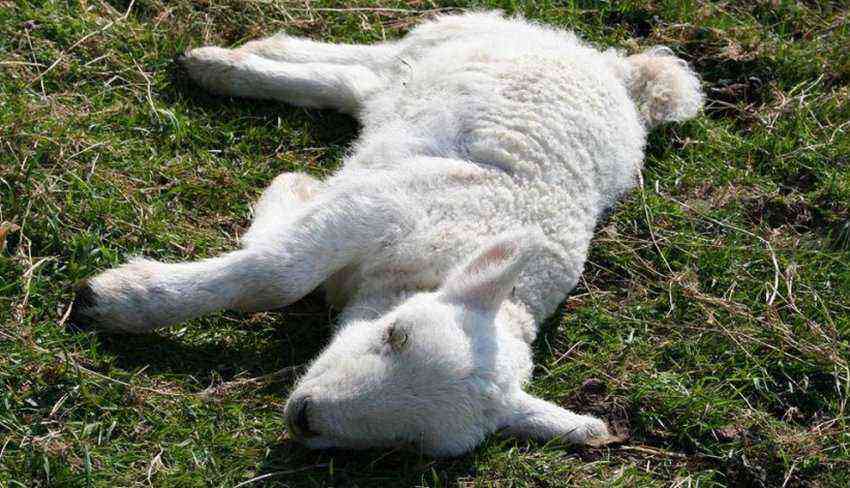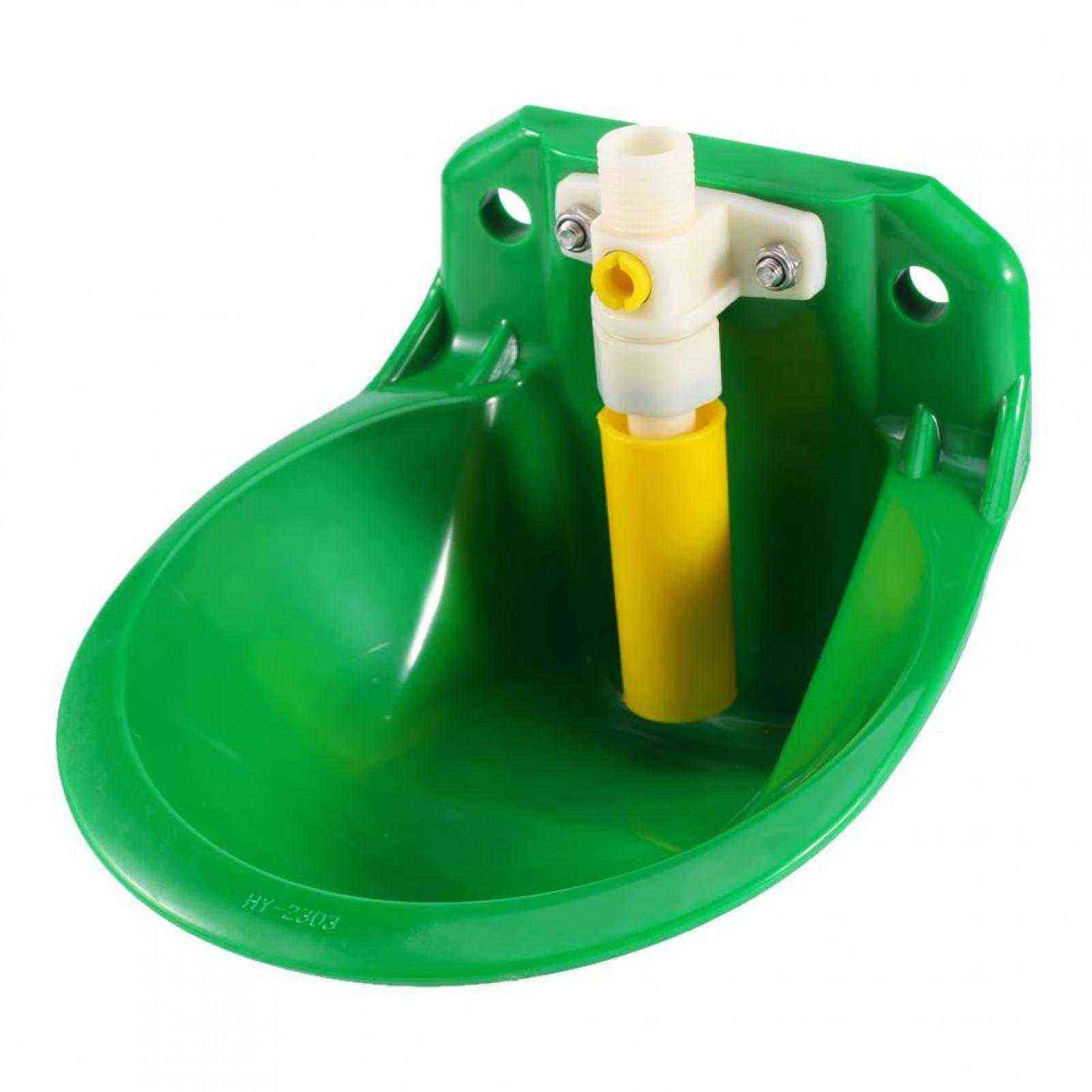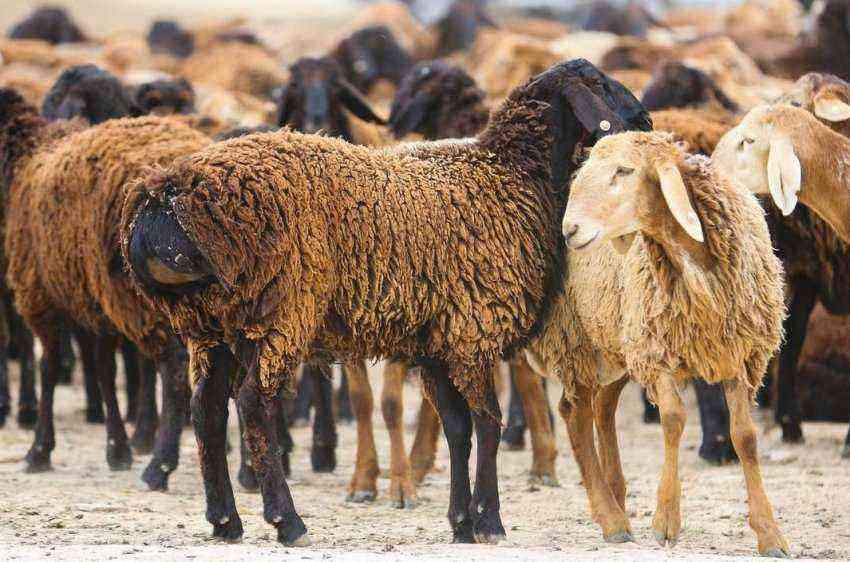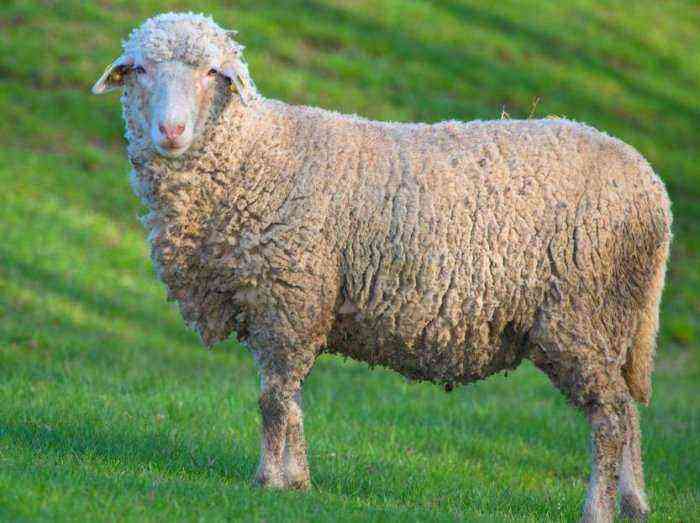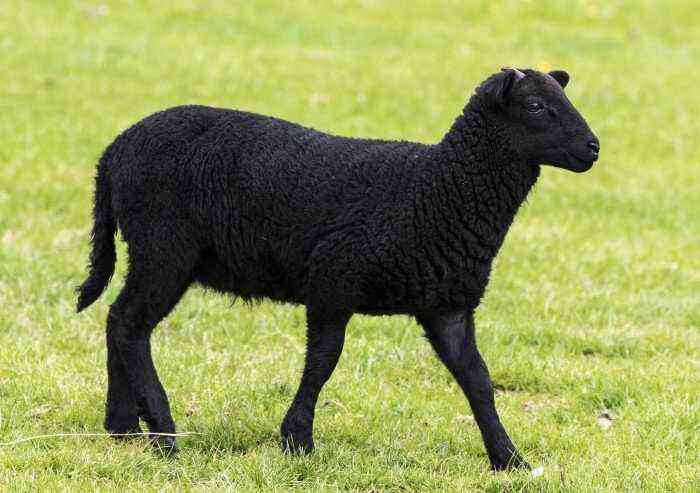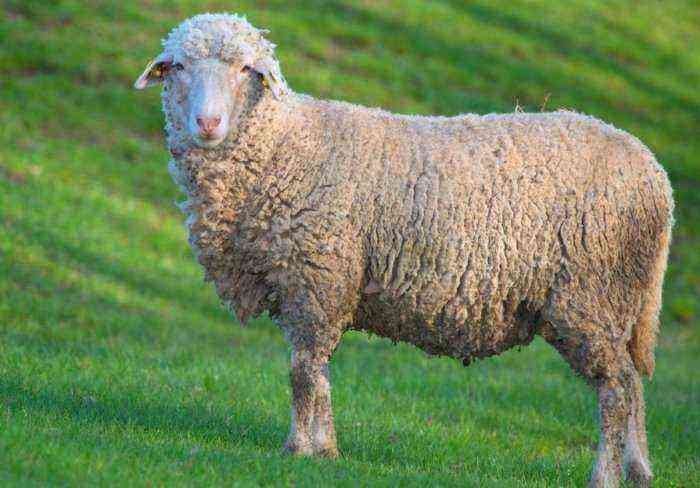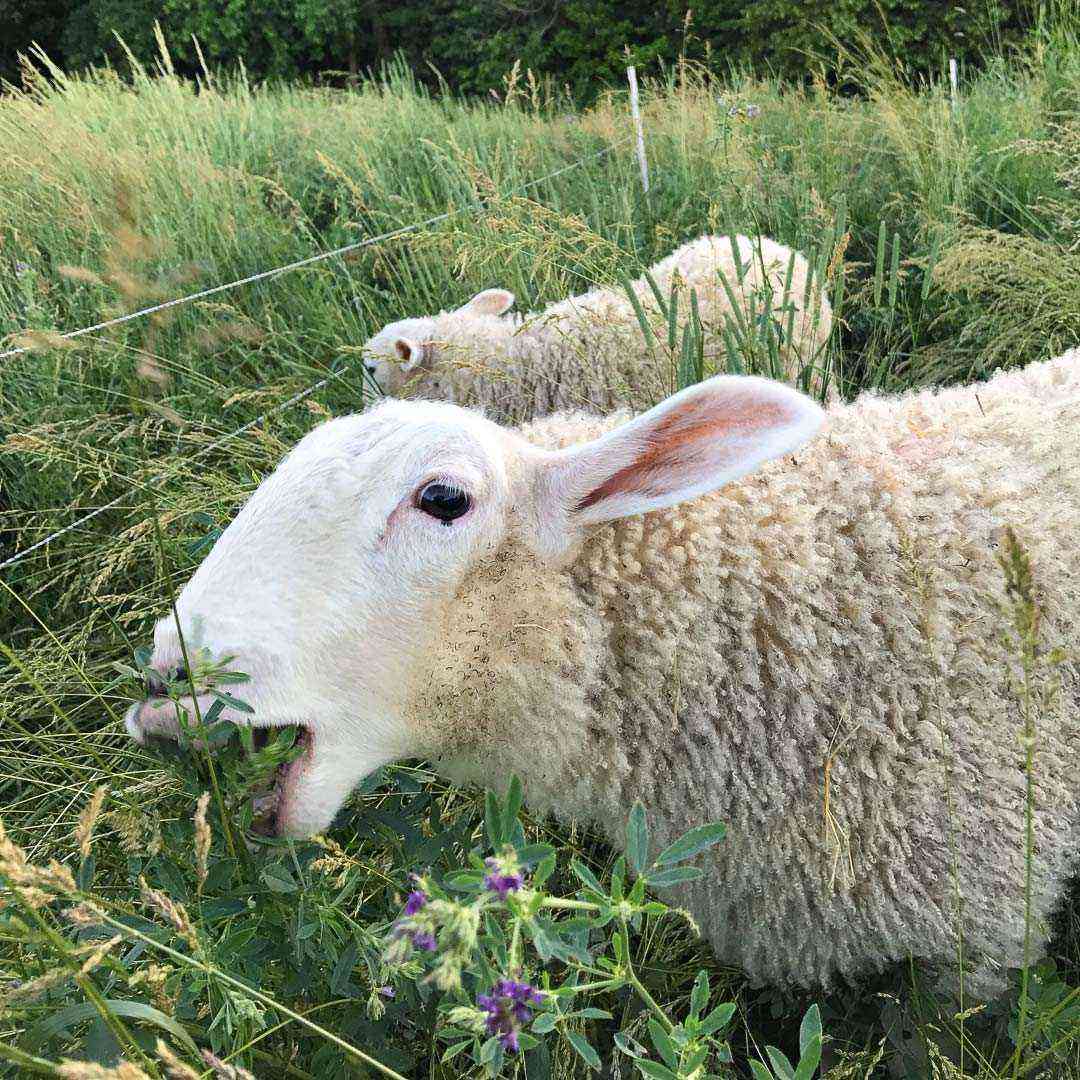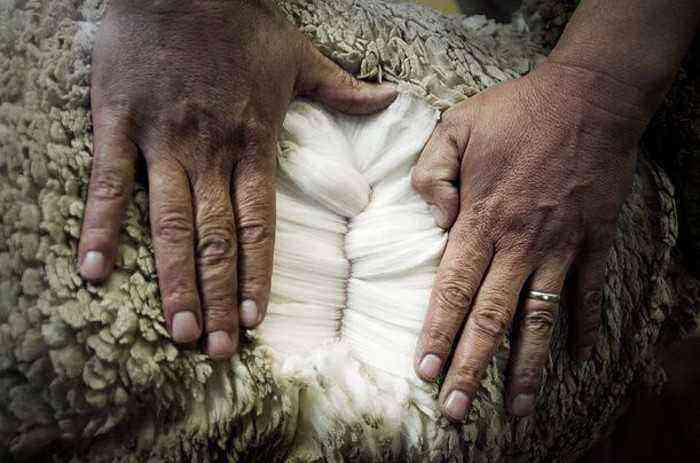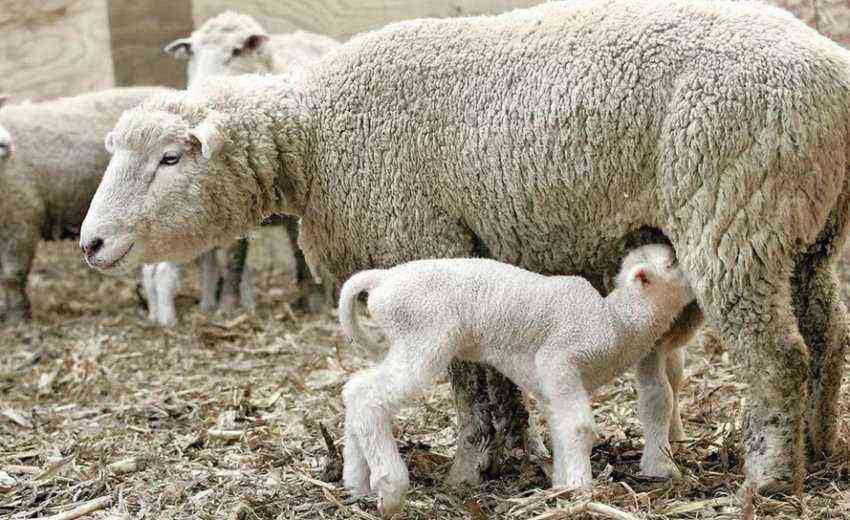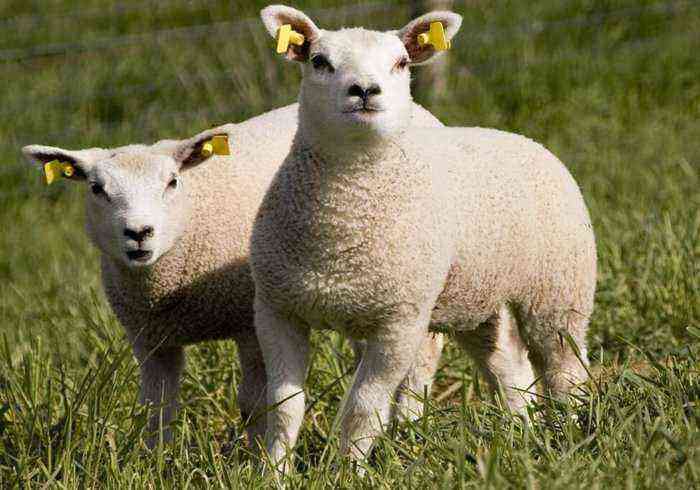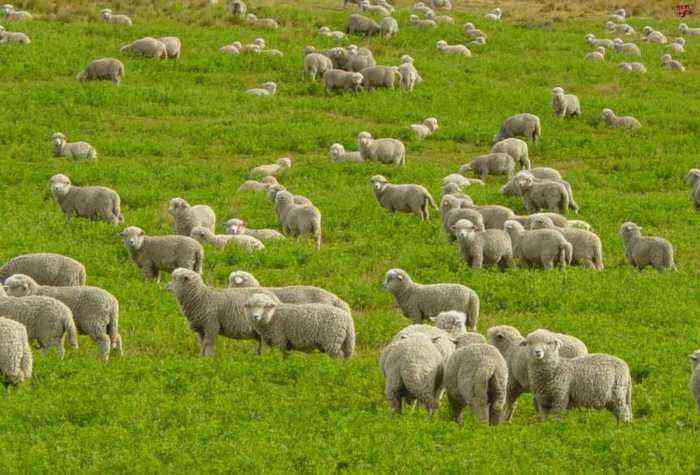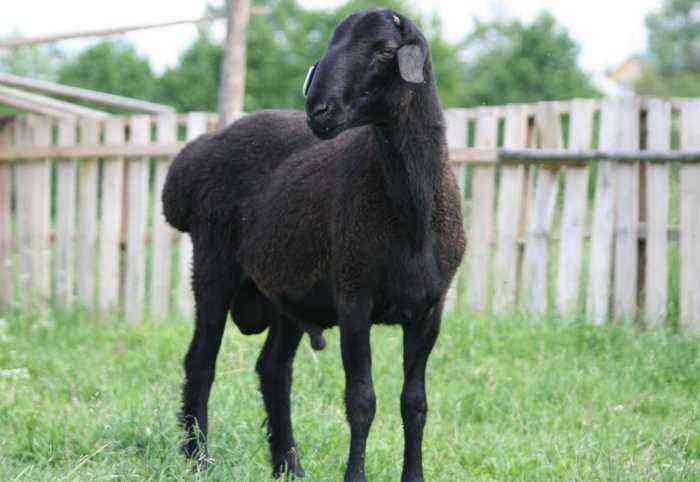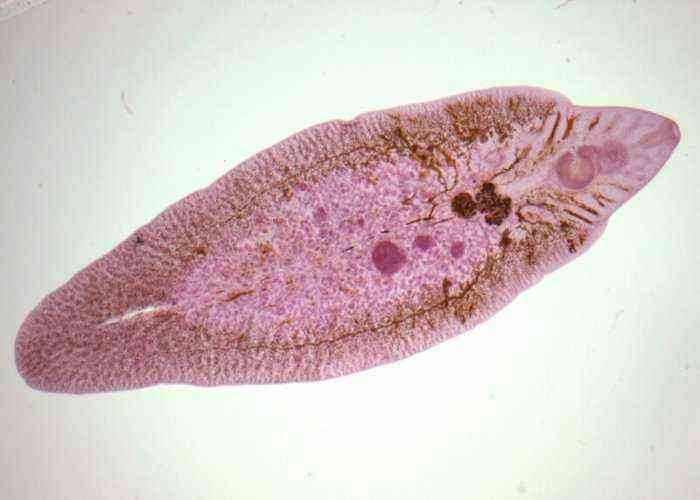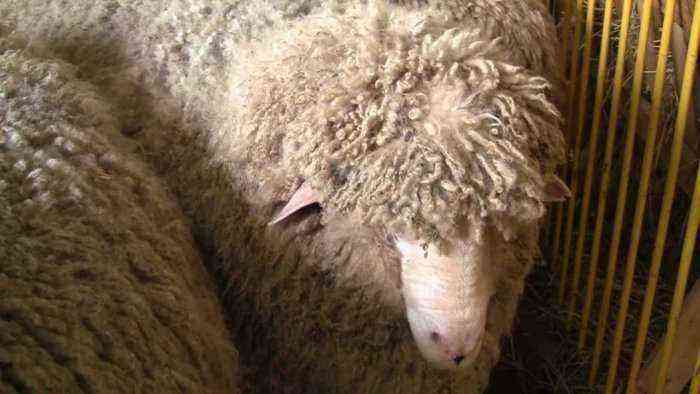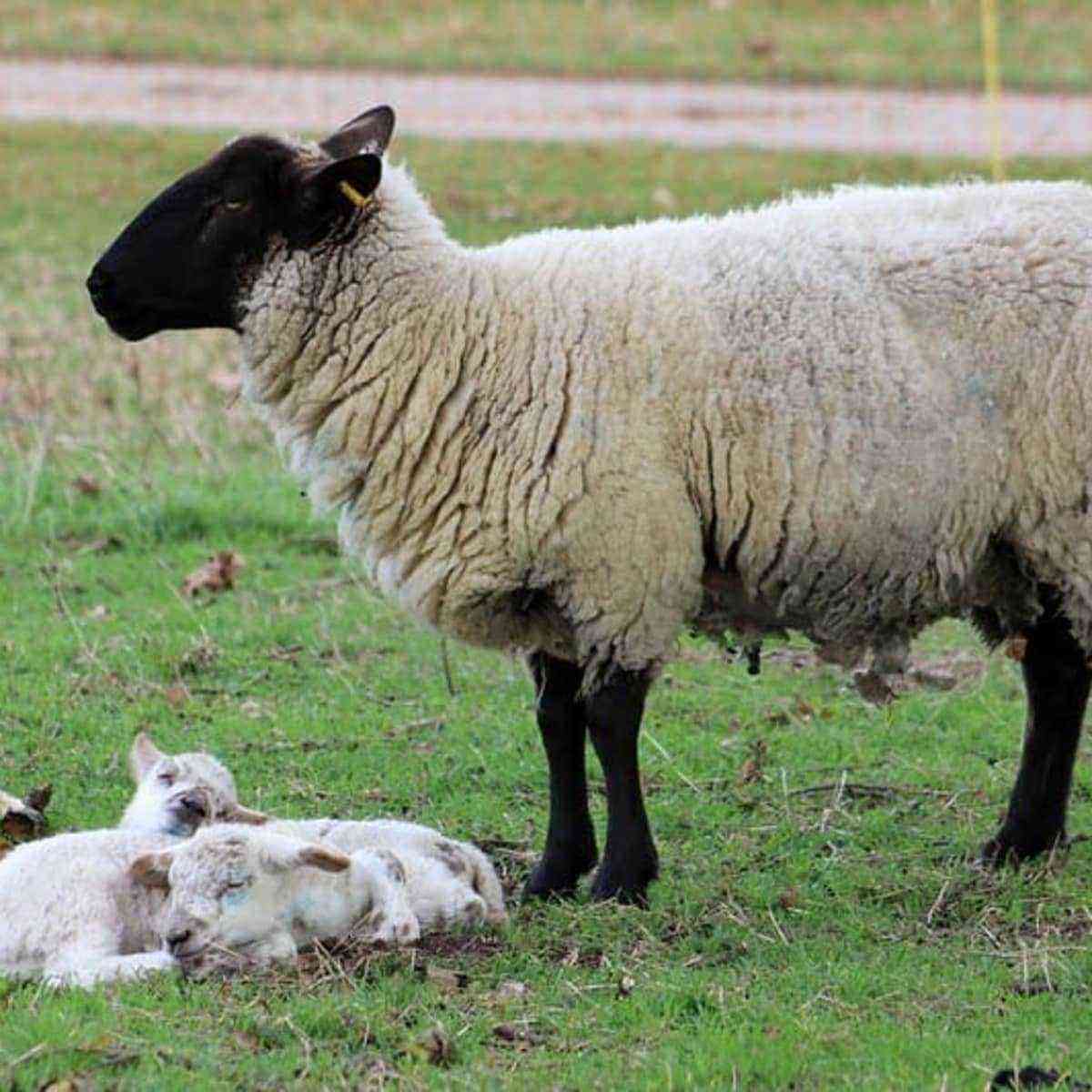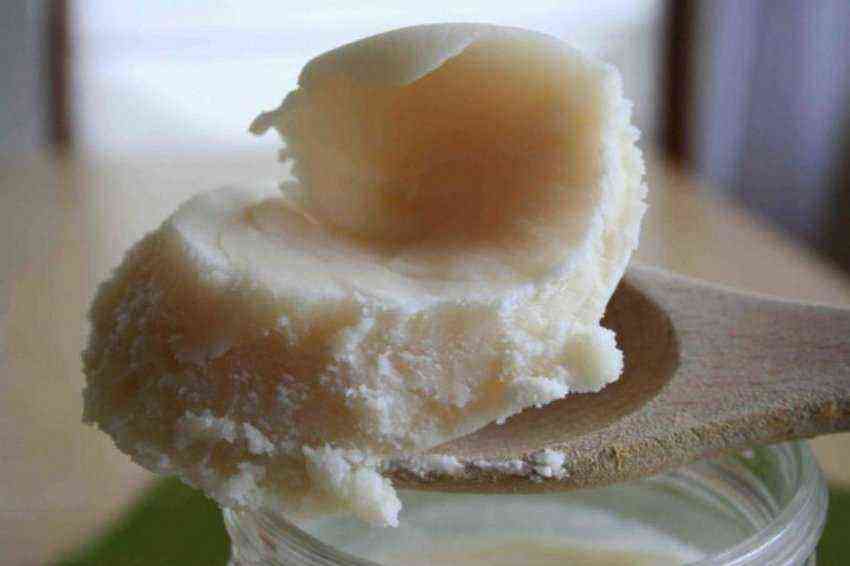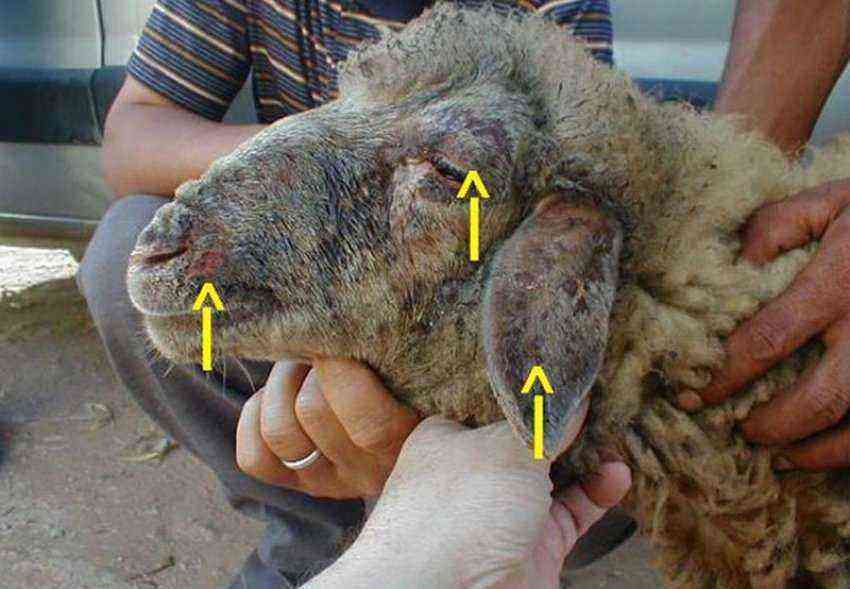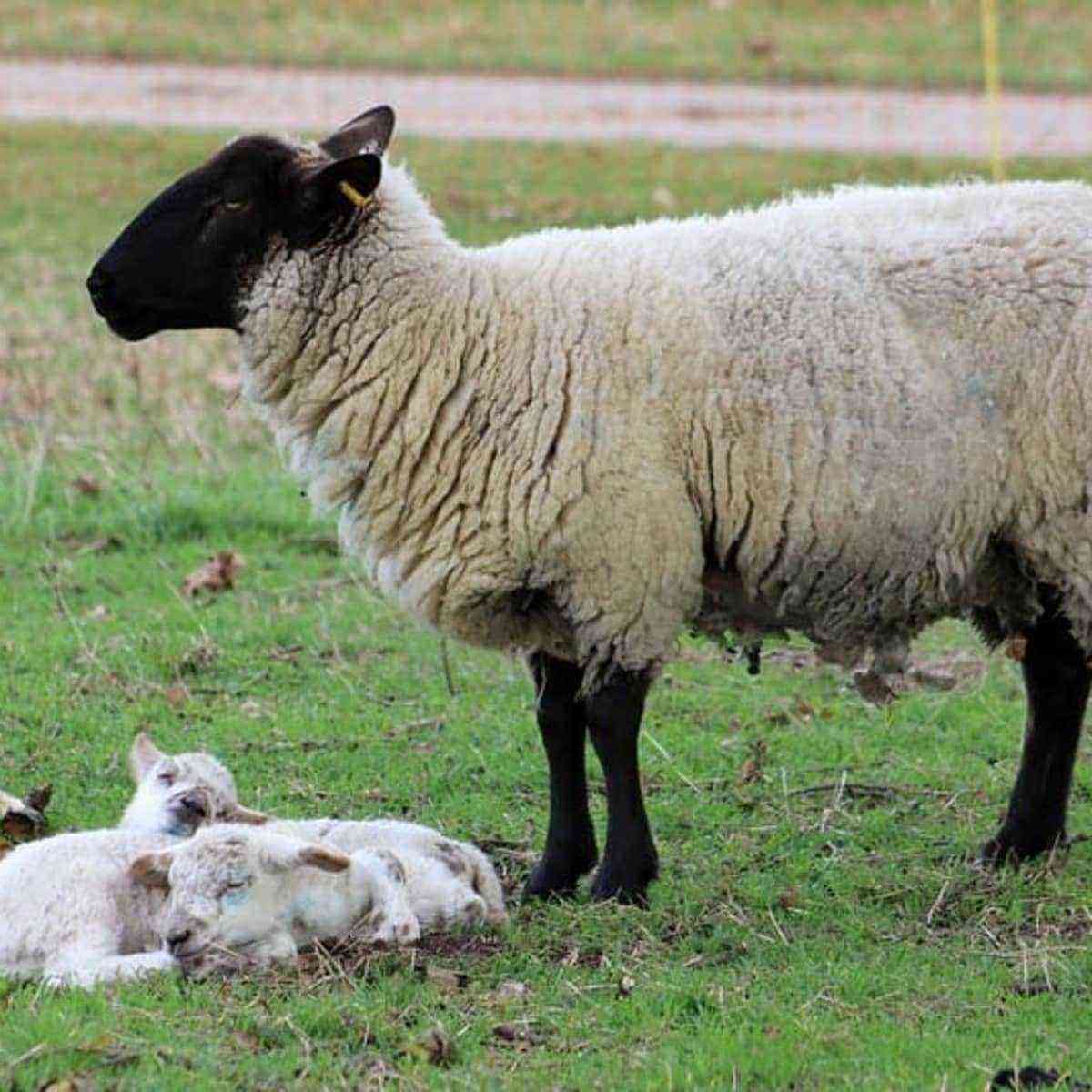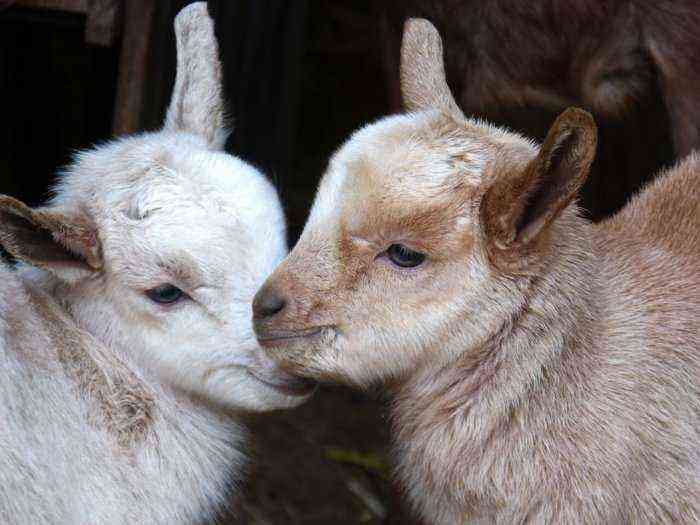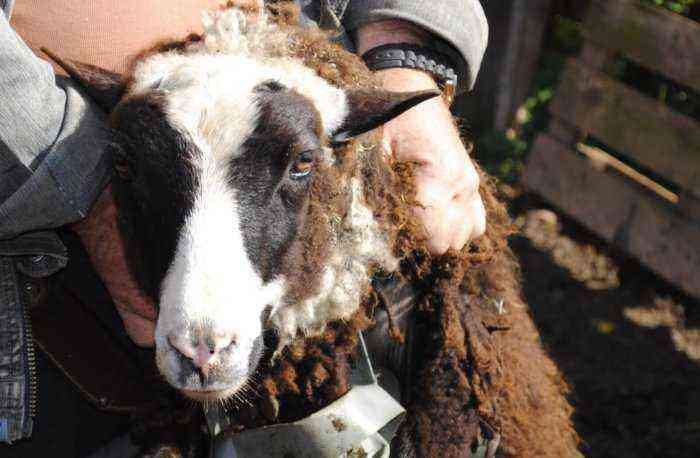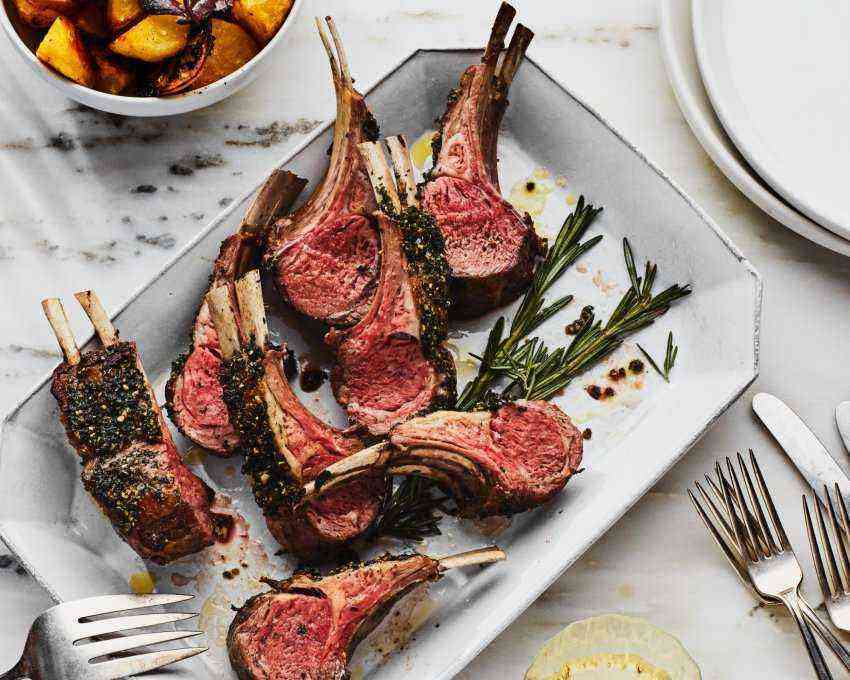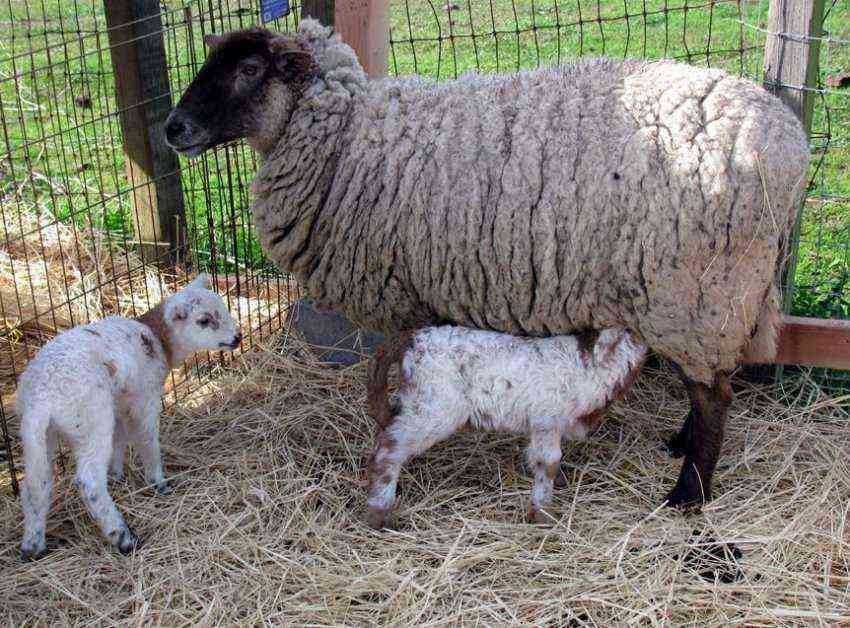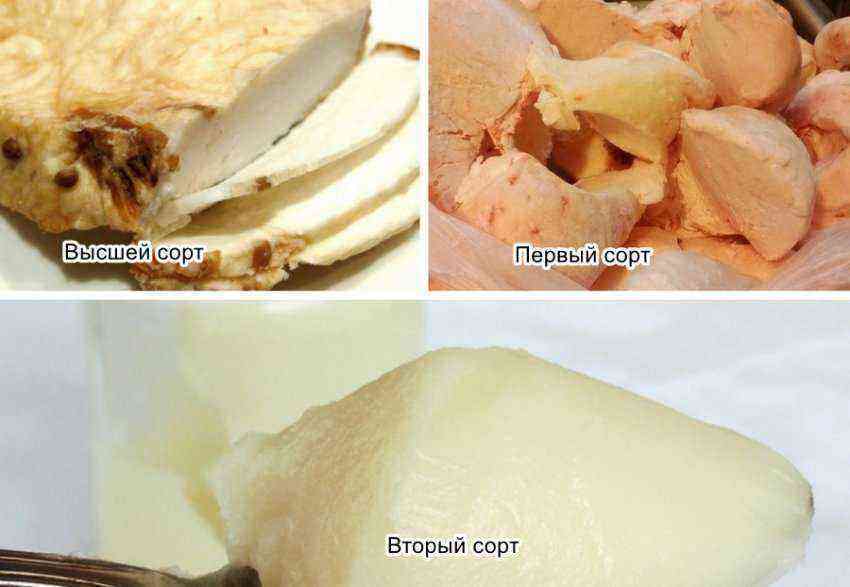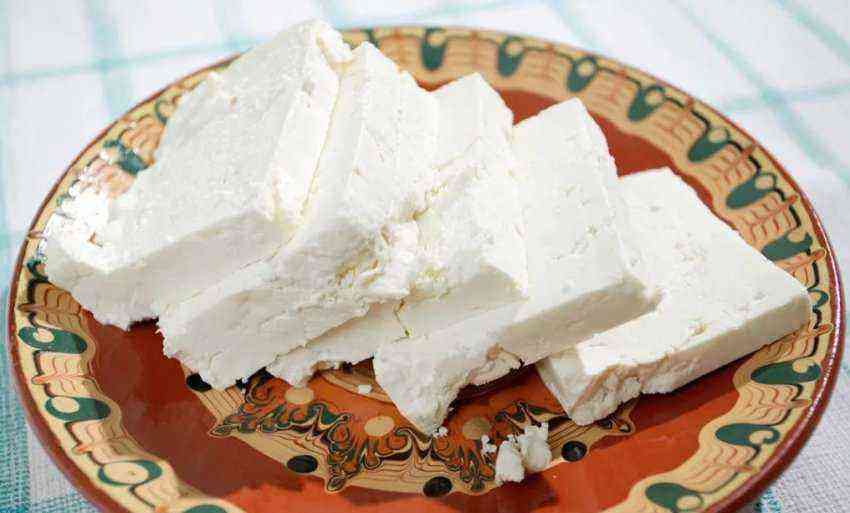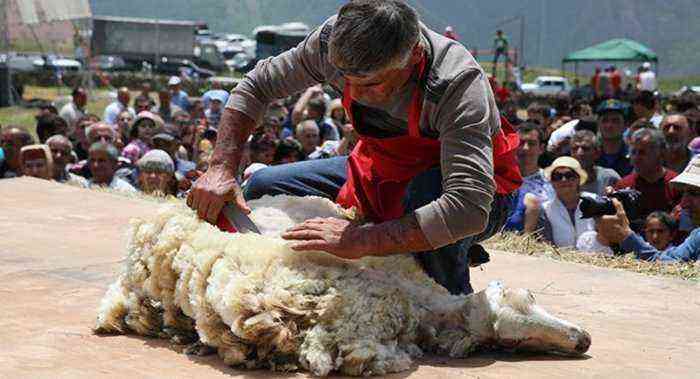The Karachay breed of sheep was bred about 200 years ago. Refers to the meat-and-wool-milk varieties, which are distinguished by a coarse woolen cover. Read more about the pros and cons of the breed, as well as its main characteristics, read below.
Karachaevskaya breed of sheep
Karachay sheep are among the most ancient. It is noteworthy that they are of independent origin, and their genetics are completely different from modern representatives.
History of the breed
The considered species of sheep was bred by folk selection in the high-mountainous Karachay near the mouths of the Kuban River. The exact date of the appearance of the breed is not known, but already in the XNUMXth century it was known outside the breeding area.
Did you know? Sheep have rectangular pupils.
The main characteristics of the breed
Before you acquire livestock, you need to dwell in more detail on its characteristics and breed characteristics. The species under consideration belongs to the coarse-haired type and the meat-and-wool-milk direction. Individuals perfectly adapt in a cool climate, feel good at high humidity. They are distinguished by good immunity – they are not susceptible to pathologies of the respiratory system and limbs. Sick and weak lambs are born very rarely.
Video: Karachaev breed of sheep
Appearance and description
Sheep of the breed in question are distinguished by their strong physique and small dimensions, which allows them to easily overcome obstacles in mountainous areas. The standard coat color for this breed is black, however, there may be individuals with gray and red shades of coat, less often with white. Also, the breed is distinguished by the presence of a long tail, up to 44 cm. Its tip is twisted in the form of the letter “z”.
The weight of male sexually mature individuals is 60–70 kg. The length of the ram’s body is 160 cm, the height at the withers is 55–60 cm. The skull is medium in size, elongated. Hook-nosed profile. The horns are large, twisted in a spiral. Despite the fact that the Karachai sheep belongs to the coarse-haired type, its fleece is soft, light, since almost 60% consists of fluff, and the remaining percentages are hair.
A sheep weighs 40–50 kg. The length of her body reaches 140–150 cm, the height at the withers is 45–50 cm. The head is small, neat, elongated. The profile is more even than that of males. The horns are smaller and grow upwards. Wool has a more delicate texture.
Did you know? In Madagascar, sheep meat is not eaten, because the locals believe that it is in these animals that the souls of dead ancestors are embodied.
A lamb weighs 3,6 kg at birth. When fed with mother’s milk, babies gain weight very quickly – the daily gain is 250–300 g. By the age of three months, the cubs reach 40% of the mass of an adult.
Performance features: wool, meat
Karachay sheep are one of the most productive breeds. For a year, 3 kg of wool is obtained from a ram, 2,6 kg from a female. In addition, female individuals give a large amount of marketable milk. So, 30-50 liters of milk with a fat content of 9,6% are milked from one uterus.
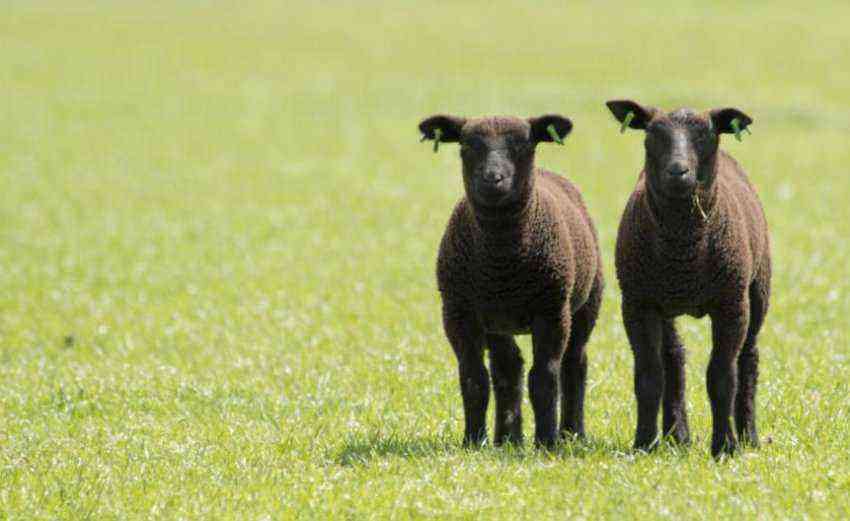
Females usually bring 1 lamb, less often – 2-3 babies. There are 100–105 lambs per 110 queens.
Animals are ready for slaughter by 3-4 months. The slaughter weight per carcass is 47–56%. The meat has a tender texture and a pleasant taste. Has no specific smell.
Intrabreed subspecies of the Karachai sheep
There are several intrabreed subspecies of the Karachay sheep:
- Karamyuz – representatives of the subspecies are distinguished by a lighter, longer and silky coat of dark, often black color.
- Kekbash – this variety of the breed is becoming popular due to high body weight gains, excellent taste characteristics of meat products. Individuals are mostly grey-white in color. Their fleece is rough, but light.
- Tumak – bovid representatives of the breed. Their fleece is extremely soft, contains a high percentage of fluff (about 80%). Sheep are predominantly black.
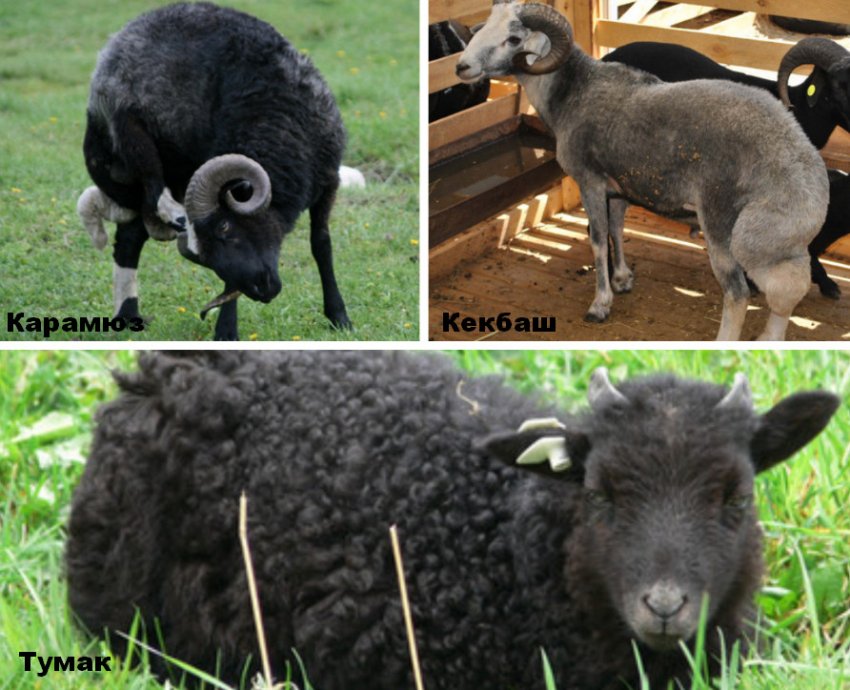
Advantages and disadvantages of the breed
Before you start breeding the breed in question, you should carefully study its minuses and pluses. This will create the most comfortable conditions for animals, which will significantly increase their productivity.
- The main advantages of the Karachai sheep:
- high productivity of meat, milk, wool;
- excellent quality of products;
- precocity
- excellent immunity;
- ability to move in mountainous terrain;
- unpretentiousness in care;
- purebred breed.
Did you know? The Greeks and Romans used sheep as sacrificial animals to offer to the gods.
The breed has only one minus – it is difficult to breed sheep in a hot climate. This is due to the difference in the vitamin and mineral composition of vegetation in their natural range and southern regions. When bred in such conditions, animals may suffer from nutritional deficiencies. However, at the moment there is a sufficient amount of vitamins that can be introduced artificially into the diet of livestock.
Care
One of the main requirements when raising sheep is the availability of high-quality feed and a place where you can hide from the frost in winter. Cattle need a spacious area for grazing. On average, one female with 2-3 lambs requires 1 ha of land. If there is a reservoir nearby, then this is ideal, since animals consume about 10 liters of water per day.
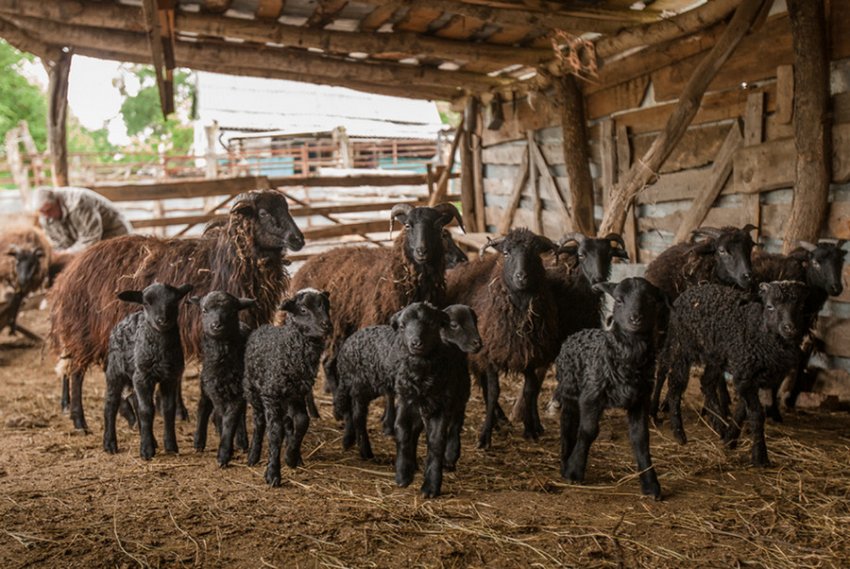
On this territory, it is necessary to organize a sheepfold, in which there will be elementary ventilation, access to light is provided, drinkers and feeders are placed, and a place for animals to rest is organized. Regarding the area of u10bu40bthe room, XNUMX m² will be enough for XNUMX queens with offspring. In addition to the above, care should be taken to ensure that there is a warm bed of soft hay on the floor of the sheepfold. The bedding needs to be changed as it gets dirty and wet. Drinkers and feeders should be kept clean at all times.
Breeding sheep is a fairly profitable occupation, as they are not at all whimsical in food. From early spring, with the appearance of young greenery, they begin to switch to pasture and stay on it until late autumn.
In winter, you can enter into the diet of animals:

The considered breed of sheep practically does not get sick. The only thing that should not be forgotten is the prevention of infection with helminths. 2 times a year, you need to consistently carry out preventive measures. They consist in the introduction of special preparations into animal feed. The Univerm tool has proven itself well – it has not only an anthelmintic effect, but also helps to increase the protective functions of the body. Packaged in a convenient dosage, applied according to the instructions.
Important! Anthelmintics should be given to females and males before mating, 1–1,5 months before. It is strictly forbidden to give them to queens bearing cubs, feeding and milking them.
Twice a year you need to invite a veterinarian for an examination and routine vaccination. Also, one of the preventive measures is a thorough disinfection of the winter hut before leaving for the winter. To do this, walls and floors are treated with copper sulphate of 3% concentration, then the room is thoroughly ventilated.
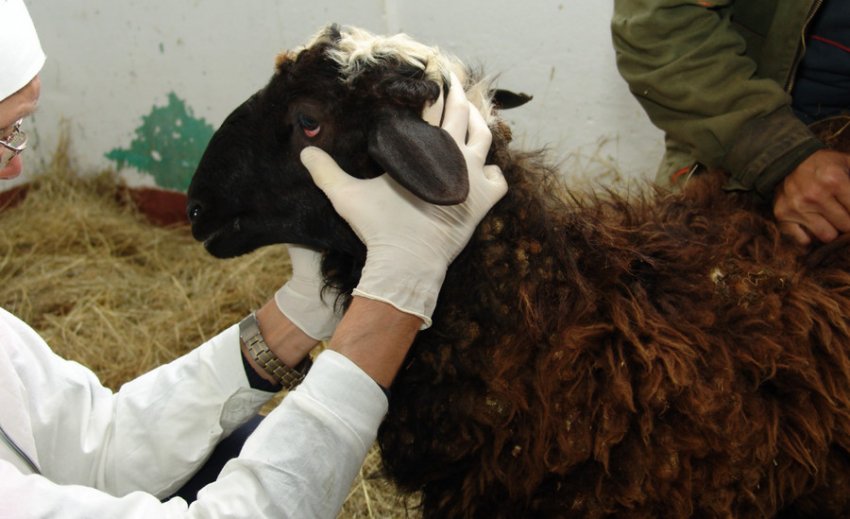
When buying new individuals, they must be kept separately from existing sheep – in quarantine, for 1 month.
It is imperative that all adult members of the herd be sheared once a year in May-June. Hooves should also be trimmed before the start of the pasture season.
Reproduction
Males reach puberty at 6-7 months, mating is allowed from 9-12 months. In the female, down accounts for almost 70%. They reach puberty at 6–7 months, however, due to the continued formation of the animal’s body, they are allowed to mate at the age of 1,5 years.
Sexual hunting in females occurs around September – October. At the same time, if you use “Progesterone” or other hormonal agents, you can artificially induce hunting at any time of the year convenient for the owner. But such actions should be carried out only with the participation of an experienced veterinarian.
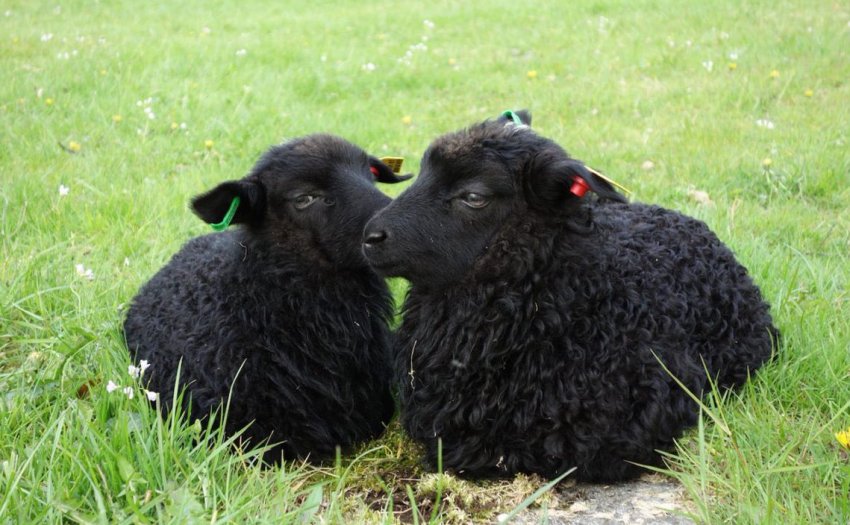
After mating, you need to ensure that the females are calm, so it is better to separate the males from them. During pregnancy, females require a balanced diet. Their need for food increases by 50-70%, so you should carefully monitor the availability of feed in the feeders and water in the drinkers.
In addition to standard food products according to the time of year, the uterus needs to be introduced into the diet with meat and bone meal (20 g per individual) or chalk (30 g per individual), as well as salt. To provide the sheep with a daily need for salt, you can install a special salt stone at the walking place (in summer) or in the sheepfold (in winter), which can be bought at a pet store. 6 weeks before lambing, you need to increase the percentage of grain feed in the diet of queens.
lambing
Pregnancy lasts 140–160 days. Before lambing, it is necessary to prepare the room – it must be dry, warm, pre-disinfected. It is better to lay a layer of straw on the floor as bedding. During winter lambing, it is imperative to monitor the temperature in the room – it should be within + 5 … + 12 ° С.
Important! Before lambing, the uterus is cut off the hair between the hind limbs – this approach makes it easier to give birth, as well as reduce the risk of infection for mother and baby.
Signs of approaching lambing:
- 2-3 days before the start of the process – the udder swells, the belly sags noticeably, and the labia increase in size and acquire a brighter shade;
- immediately before childbirth – the uterus often lies down, then gets up, behaves restlessly, looks around, makes groaning sounds.
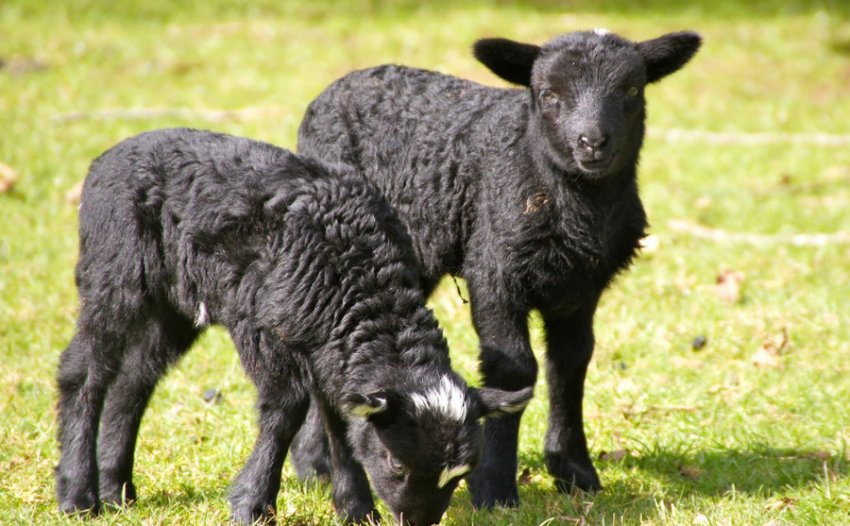
It is at the moment of lambing that a person should be in the sheepfold. If labor activity takes place without pathologies, then 30 minutes after the onset of attempts, the amniotic sac begins to come out of the external genital organs. After its rupture, the cub comes out with its front hooves and head forward. If there is more than one lamb, then after 10-15 minutes a second baby will appear. In this case, after the birth of the first lamb, when the female lies down again, you need to leave her alone and wait for the birth of the second.
Important! If the amniotic sac does not burst itself, then after 15 minutes it must be pierced with a needle disinfected in alcohol, otherwise the lamb will suffocate.
Immediately after lambing, you need to let the female lick the lambs. If she does not do this, then you should wipe the baby with a towel soaked in warm water.
Raising lambs
For the first 3 months, the cubs are suckled by their mother. Usually, during winter lambing, this period is sufficient before the appearance of plant food. As soon as pasture appears and the herd begins to go for a walk, the female will independently transfer the babies to adult food. The task of the farmer is to ensure sufficient nutrition of the uterus during the breastfeeding period.

Breeding areas
Given the northern origin of Karachay sheep, the main areas for their breeding are:
- Karachay-Cherkessia;
- North Ossetia;
- Kabardino-Balkaria.
For breeding the considered breed of cattle, zones with high humidity, mountainous terrain are suitable. Animals are not afraid of sudden changes in temperature.
Did you know? The phrase “Karachai sheep” also correlates with other breeds that are bred in the Caucasus: Circassian, Kabardian and Ossetian. All breeds have high rates in all areas: wool, dairy, meat.
Karachay sheep are distinguished by high productivity in all directions. They are completely undemanding in care and spend most of their time free-range. A cool area with an abundance of lush vegetation is more suitable for their breeding.
